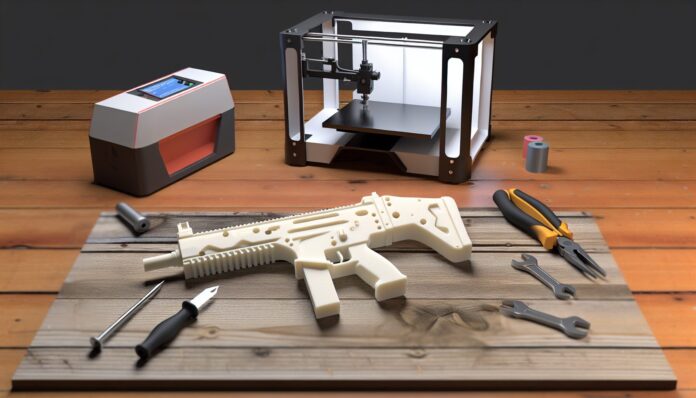3D printing continues to disrupt traditional manufacturing, and one of its most controversial applications is in the creation of so-called “ghost guns”—untraceable firearms made at home. Recent developments show that full-auto bullpup-style ghost guns can now be produced for just a few hundred dollars, with designs evolving rapidly outside the United States.
3D-Printed Ghost Guns: A Growing Global Trend
Ghost guns are firearms that are assembled from parts, often including 3D-printed components, and lack serial numbers, making them difficult to trace. While the U.S. has been a focal point for ghost gun discussions, the latest innovations are emerging from international communities. A recent report from Tom’s Hardware highlights how global DIY firearm enthusiasts are pushing the boundaries of what’s possible with consumer-grade 3D printers.
One of the most notable developments is the creation of a full-auto bullpup-style ghost gun. The bullpup configuration places the action and magazine behind the trigger, allowing for a more compact weapon without sacrificing barrel length. This design is favored for its ergonomic advantages and is now being replicated in 3D-printed form.
Affordable and Accessible: The Cost of DIY Firearms
According to the report, these 3D-printed bullpup ghost guns can be built for just a few hundred dollars. The affordability is due to the use of widely available materials and open-source design files. Builders typically use FDM (Fused Deposition Modeling) 3D printers, which are inexpensive and accessible to hobbyists worldwide.
In addition to the printed components, builders source metal parts such as barrels and springs from online retailers or repurpose them from existing firearms. The combination of low-cost materials and community-shared knowledge has significantly lowered the barrier to entry for creating functional firearms at home.
Technical Evolution and Design Sophistication
The designs of these ghost guns have become increasingly sophisticated. The bullpup ghost gun featured in the report includes a full-auto firing mechanism, a feature that is heavily restricted or outright illegal in many countries. The design also incorporates modular components, allowing users to customize or upgrade their builds.
These advancements are largely driven by online communities that share CAD files, assembly instructions, and troubleshooting tips. Platforms like Odysee, Reddit, and dedicated forums have become hubs for this underground innovation. The collaborative nature of these communities accelerates the pace of development, with new iterations and improvements appearing regularly.
Legal and Ethical Implications
The rise of 3D-printed ghost guns raises significant legal and ethical concerns. In the U.S., the Bureau of Alcohol, Tobacco, Firearms and Explosives (ATF) has attempted to regulate ghost guns by requiring serial numbers and background checks for key components. However, enforcement is challenging, especially when designs are shared globally and parts are sourced anonymously.
Outside the U.S., countries with stricter gun control laws are also grappling with the implications of DIY firearms. The decentralized nature of 3D printing makes it difficult for authorities to track or prevent the spread of these weapons. As designs become more advanced and accessible, the potential for misuse increases.
The Future of 3D-Printed Firearms
While the technology behind 3D-printed firearms continues to evolve, so too does the debate around their regulation. Advocates argue that the right to bear arms includes the right to manufacture them, while critics warn of the dangers posed by untraceable, easily produced weapons.
What’s clear is that 3D printing has permanently altered the landscape of firearm manufacturing. As printers become more capable and materials more durable, the line between hobbyist experimentation and functional weaponry continues to blur. The emergence of full-auto bullpup ghost guns for under $300 is just the latest chapter in this ongoing story.
Source: Tom’s Hardware

